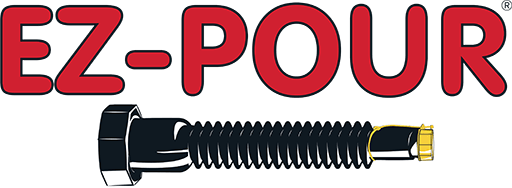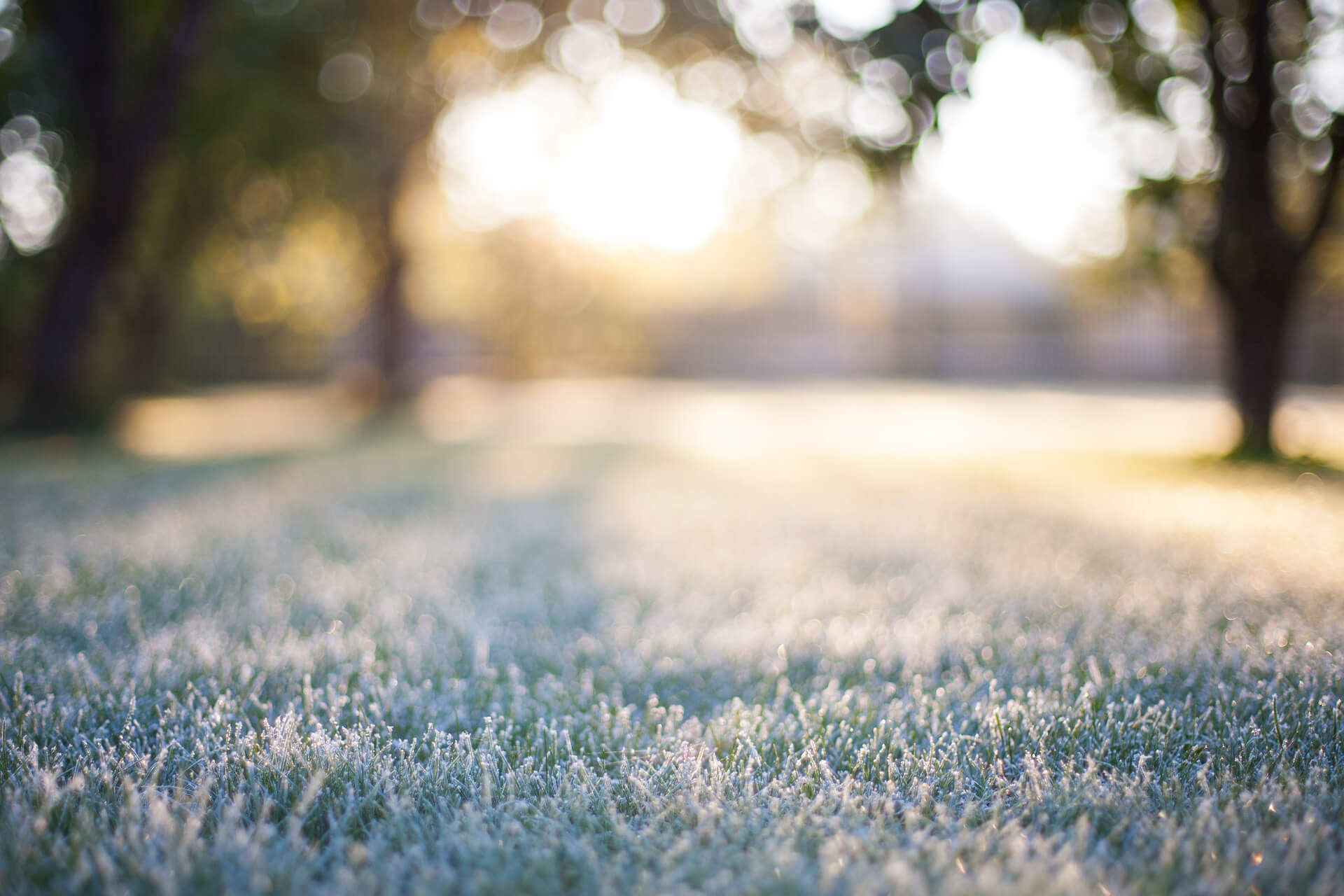While certain regions across the United States have already experienced their first freeze and snow, for others, like the Midwest, as December comes to a close and cold weather closes in, it’s paramount that individuals take the necessary steps to prep their lawn to survive the winter so it can flourish come springtime.
Read on for a winter lawn prep list you can follow to keep your lawn as healthy as possible during the coming months.
Clear Fallen Leaves
During the fall, it’s easy to let leaves collect on your lawn. However, it’s crucial that you get out there to rake them up or turn them into mulch (when possible).
There are three reasons why you shouldn’t let fallen leaves cover your lawn during winter:
1. Fallen leaves can suffocate your lawn, inhibiting grass growth come spring.
2. Leaves can promote snow mold, a group of diseases that strike in cool and cold weather, and thrive in snow cover.
The four most common of these diseases are:
- Microdochium patch,
- Typhula blight,
- Coprinus snow mold,
- And snow scald.
- Critters (voles, mice, chipmunks, etc.) are more likely to burrow through your yard, possibly creating extensive turf damage you’ll only notice once the snow melts and temperatures rise.
Cut Your Grass Short
As temperatures drop and you move into your final few mows of the year, gradually lower your cutting deck each time you mow your lawn. This will ease your lawn into an even yet low height.
This precautionary step will also help keep animals from burrowing through your yard.
Use Winter Fertilizers
Before the ground freezes, use winter fertilizers to provide vital nutrients to any grass seed you spread earlier in the fall. Nitrogen from the fertilizer will seep into the soil, which will help kickstart your lawn in spring.
You’ll want to purchase fast-release nitrogen (N) and potassium (K) fertilizers with ratios of 20(N)-0-5(K) and 10(N)-0-14(K).
Potassium is just as essential as nitrogen because it helps lawns defend against diseases and absorb more nutrients into the soil.
Grasses also need potassium to create proteins and starches to store for winter. Be careful not to use a fertilizer with too much potassium, however. Too much could worsen any snow mold damage in bentgrass lawns.
To find out how much winter fertilizer you need and the ratio of nitrogen to potassium for your lawn, use the LAWNPHIX “Lawn Fertilizer Calculator.”
Use Lime Or Sulfur When Needed
You can use lime and sulfur to balance the pH levels in your lawn’s soil. pH levels refer to how acidic or alkaline something is.
Soil pH levels are measured on a scale of 0-14. A pH level between 6.6 and 7.3 is considered neutral. The more the pH level descends below 6.6, the more acidic the soil is, and the more the pH level increases above 7.3, the more alkaline the soil is.
Plants grow best when planted in soil with a pH between 5.5 and 6.5 (slightly acidic).
- Lime:
Use lime when your soil is too acidic. Lime is made from limestone, which is full of alkaline calcium, which can boost pH levels to a healthy range.
- Sulfur:
Sulfur is acidic, making it the perfect solution for alkaline soil.
Depending on your needs, apply either lime or sulfur in the early throes of winter (this will differ on your geographic location). You may also need to use the product more than once to reach the ideal pH level.
Testing Soil pH Levels
You can find soil pH testing kits at garden centers and online retailers or send a soil sample to a Department of Agriculture testing center.
For Missouri residents, you can send your soil sample to the University of Missouri Soil and Plant Laboratory. For information regarding soil analysis, tests, and their fees, please visit the “Test and Fees” page. Please see the “How to Submit Samples” page for information on submitting a sample and payment options.
Once you balance your pH levels, your soil should maintain healthy levels for at least the next few years. However, it is recommended to test once a year to be sure your soil is as healthy as it can be.
Use Fungicide
Snow mold typically affects cool-season grasses and longer grasses and occurs when the grasses freeze and thaw throughout winter.
You’ll want to apply fungicide just before the first hard frost as winter protection. Then, apply another round when temperatures increase enough to melt the snow. The idea is to re-apply the product during the small window between the thaw and refreeze.
Pre-Treat With A Calcium Chloride Snow & Ice Melter
Sodium Chloride Ice Melt
In sodium chloride (rock salt), the chloride ion causes most of the direct plant tissue damage. Salt accumulation in your soil may also:
- Inhibit a plant’s roots’ ability to absorb water
- Increase soil erosion
- Decrease soil fertility
- Hinder grass and wildflower seed germination
Calcium Chloride Ice Melt
Rather than rock salt on your walkways and driveway, it’s better to use a calcium chloride snow and ice melter. It’s the safest chemical if it comes in contact with your lawn or landscape. However, it can still cause some damage if over-applied.
Along with being better for vegetation, it’s more effective than rock salt with being fast-acting and able to melt ice in temperatures as low as -25 degrees Fahrenheit.
The Dangers of Over Applying
When using any ice melt product, it’s recommended to limit its use. You’ll run into problems if you use excessive amounts of ice-melt products.
If there’s not enough rainfall to wash the product from the covered surface, it will damage concrete surfaces and lawns. The worst part is that you won’t notice the damage until spring or summer.
The Importance of Pre-Treating
To prevent over-applying snow and ice melt, spread a small amount of product on whatever surface needs it before the ice or freezing rain begins. Being proactive will yield better results and only requires ¼ of the amount of product you need to melt ice after bad weather.
However, if you can’t beat the storm, some good after-storm options are play sand (used in children’s sandboxes) and kitty litter. Both options provide traction and won’t harm your lawn.
EZ-POUR® Wants Your Lawn Set For Spring
As winter rolls in, it’s tempting to stay inside and sit next to the fireplace. But before you do, ensure you’ve done all you can to prepare your lawn for those long, cold months. While the prep may infringe on your time by the fire, it’s more than worth it.
Come spring, your lawn will thank you, and you’ll be glad you put the work in to make that happen. Your efforts will promote faster growth, thickening, and green-up, making lawn maintenance much more manageable.
While preparing your lawn for winter, you are most likely preparing yourself for the winter weather. Once the snow starts to hit, it’s time to take out the snow blower.
Ensure you have the proper materials to keep your gas tank full all winter. For more information about our products, visit the EZ-POUR® home page.
Once you find the product(s) you need, you can order it straight from our website or locate a retailer near you that carries EZ-POUR® equipment.

